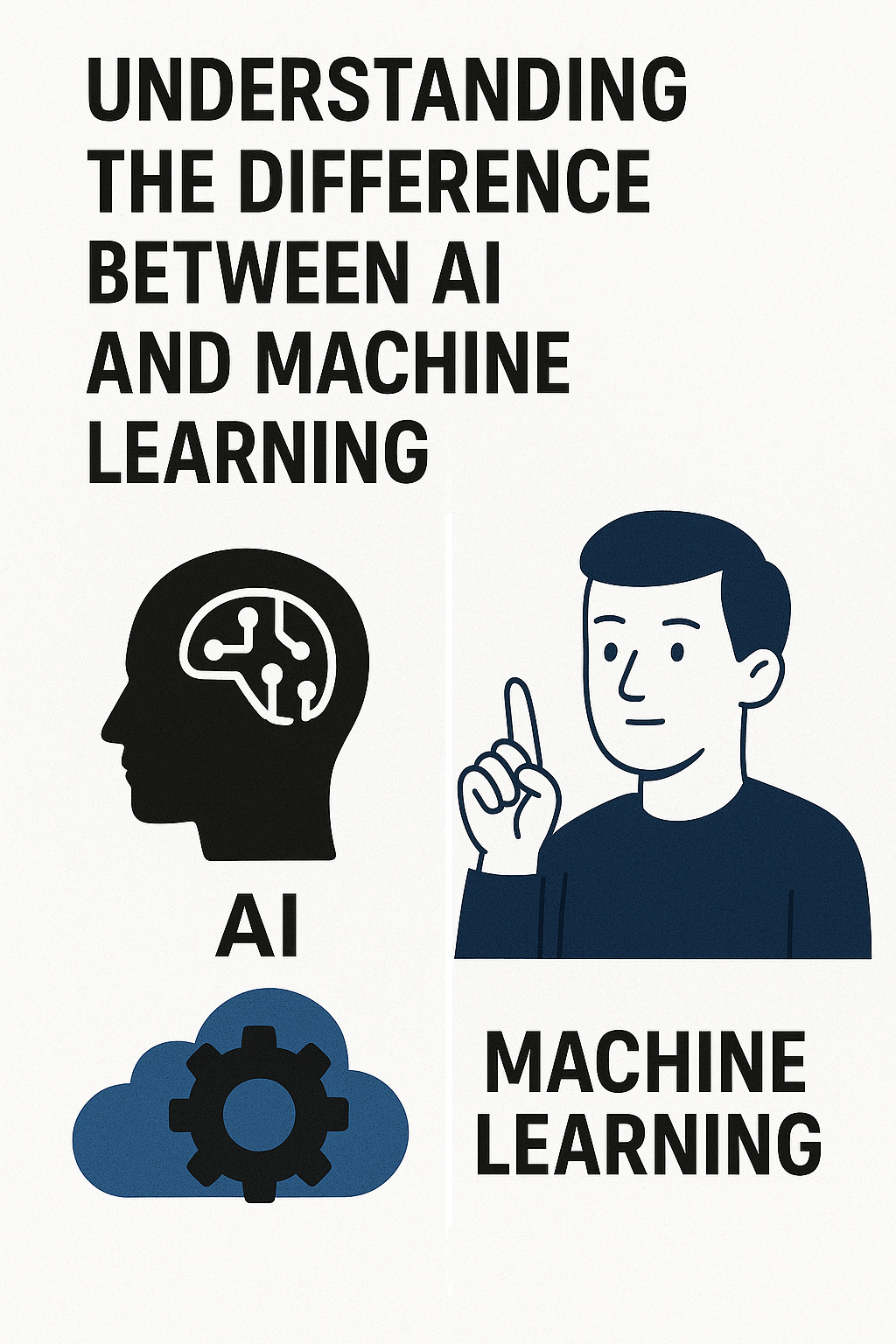In today’s tech-driven world, terms like “Artificial Intelligence” (AI) and “Machine Learning” (ML) are used constantly. But many people still confuse the two or use them interchangeably. So what exactly is the difference?
This article breaks down AI vs. ML in simple terms, helping you understand how they relate—and why it matters.
What Is Artificial Intelligence (AI)? 🤖
Artificial Intelligence refers to the broader concept of machines or systems that can perform tasks typically requiring human intelligence.
These tasks may include:
- Understanding language
- Recognizing images
- Solving problems
- Learning from experience
- Making decisions
AI systems are designed to simulate human thinking and behavior in some form.
🟢 Examples of AI:
- Chatbots like ChatGPT
- Smart assistants (Siri, Alexa)
- Self-driving cars
- Face recognition systems
- AI-powered spam filters
AI can be rule-based (if X, do Y), or it can be based on learning from data—this is where machine learning enters the picture.
What Is Machine Learning (ML)? 📊
Machine Learning is a subset of AI. It refers to systems that learn from data, rather than being explicitly programmed.
In simple terms, machine learning is how a system “trains” itself to improve its performance over time.
🟢 Key Idea: The machine is not told what to do step-by-step—it finds patterns on its own from large datasets.
🟢 Example:
- You feed a machine thousands of images labeled “cat” or “not cat.” Over time, it learns to predict whether new images show a cat.
ML powers many everyday AI systems:
- Netflix recommending shows
- Google showing relevant search results
- Email apps detecting spam
- Banks detecting fraud based on behavior
How Are AI and ML Related?
Think of it like this:
- AI is the overall goal—to create smart systems
- ML is one of the techniques used to achieve AI
🎯 Analogy:
- AI is the “car”
- ML is the “engine” that powers the car
Not all AI uses machine learning. And not all machine learning is “intelligent” in a human sense. But ML has become the most successful method for building effective AI systems.
Types of Machine Learning
There are three main types of machine learning:
1. Supervised Learning
- You give the machine labeled examples (input + correct output)
- It learns the mapping and applies it to new data
🟢 Example: Predicting house prices based on past data
2. Unsupervised Learning
- The data has no labels
- The machine tries to find patterns or groups on its own
🟢 Example: Grouping customers into segments based on behavior
3. Reinforcement Learning
- The machine learns by trial and error
- It gets “rewards” for good actions, and “penalties” for bad ones
🟢 Example: AI playing chess or training a robot to walk
Other Related Terms
As you explore AI and ML, you’ll often hear about these as well:
- Deep Learning: A subfield of ML that uses neural networks with many layers. It powers things like image recognition and voice generation.
- Neural Networks: Algorithms inspired by how the brain works.
- Natural Language Processing (NLP): A field of AI that focuses on understanding and generating human language.
- Data Science: Uses statistics, programming, and ML to find insights in data.
- Automation: Often powered by AI/ML to reduce human intervention.
Why This Distinction Matters
Understanding the difference between AI and ML helps you:
✅ Know what a tool or product is actually doing
✅ Make better decisions as a consumer or business owner
✅ Communicate clearly in tech conversations
✅ Learn the right skills if you want to work in the field
🛑 Don’t fall for hype. Just because something says “AI” doesn’t mean it’s smart. It may be a simple set of rules with no learning involved.
Real-Life Example: AI vs. ML
Let’s say you’re using a photo-editing app:
- If it automatically adds a blur effect to faces—based on a rule—that’s basic AI.
- If it improves face detection over time as it processes more images—that’s ML.
Another:
- A spam filter that blocks emails from “free-money@example.com” is rule-based AI.
- A filter that learns from user feedback on what’s spam is ML.
Conclusion
Artificial Intelligence is the big picture: machines doing things that require intelligence.
Machine Learning is a method used to get there—by allowing machines to learn from data.
As both continue to grow rapidly, understanding the difference can help you use them more wisely, whether you’re building a product, choosing software, or just navigating the digital world.
AI is the destination.
ML is one of the roads we take to get there.
